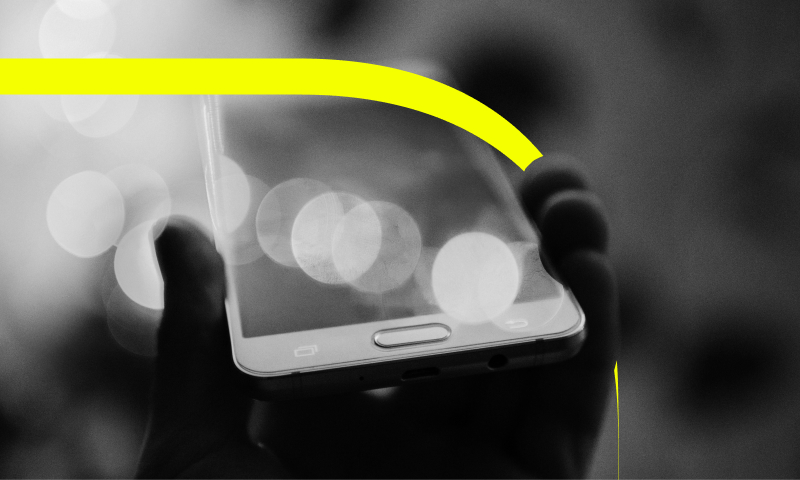T&H CX > Insights > Digital Insights > You Need Direct Resp...
In the words of the late direct response advertising expert David Ogilvy, “Marketing is on a collision course”1. Traditional mass-market advertising techniques, whilst historically great for brand awareness and demonstrating the originality and creativity in our industry, are being questioned for their cost, lack of return and reduced effectiveness on already loyal customers.
With budgets tightening, increased demand for accountability for performance, and rising consumer expectations, you need to implement measurable and cost-effective tactics that get cut through and drive conversion at every customer interaction.
You need direct response marketing.
Direct response is the modern comeback of ‘old school’ direct marketing. The shift to more purpose-led design through direct response is becoming today's enabler to creating end-to-end customer experiences.
While brand marketing helps inspire choice and build brand awareness, direct response motivates customers to act.
Direct response is a short-term tactic that focuses on triggering an immediate action from a customer. The approach to direct response is informed by human psychology, understanding your relationship with your customer and where they sit in your customer lifecycle.
Email, SMS, Programmatic and Direct Mail are the main channels associated with this form of communication; however, those that are winning at customer experience are leveraging these same proven design principles and applying them to digital channels. Wherever your customers are, direct response marketing forces you to jump into their shoes and assess what combination of design and copy is needed to elicit the desired response or action.
Business and marketing leaders that continue to see design as a visual garnish aren’t getting the full benefits of the design process.
The makeup of a design execution can profoundly influence the quality of a customer's interaction with you. From the colour and type hierarchy to how a page is structured, or a single CTA treatment, all of these elements play a conscious and unconscious role in moving the customer towards an outcome (positive or negative).
Unfortunately, an unintended consequence of seeing design as a visual garnish is that branding has become an exercise in emotion and subjectivity. Businesses spend thousands of dollars on beautifully emotive brands beloved by those within the organisation who have a say, but that simply do not translate well when it comes to cross-channel application. These beautiful brands might be periodically memorable and exciting, but do they really drive sales and can they last the test of time?
In direct response design, absolutely every element has an action-driven purpose. There is minimal room for clutter or pretty design additives that detract from the core conversion goal. Simple tactics like bolding keywords within body copy, having a CTA within the first few seconds, and using imagery only when needed are just some key tactics that drive customer action.
A Harvard study was established to assess direct design's role in influencing retirement service provider Voya Financial's customers to increase their initial contributions. After a change to the digital colour scheme based on colour theory, customer psychology and reorganisation of the page's structure to re-weight the accessibility of relevant information, the study found that direct design changes resulted in an approximate increase in initial contributions of 60%2.
Customers are constantly being bombarded with brand messages, and if you're going to cut through the noise, you're going to need to move to adopt personalisation and 1:1 marketing strategies.
Taking a direct response approach to copy requires a unique ability to craft a message for a specific customer. It’s more than just using their name. It needs to be contextually relevant based on where they are at in their customer journey (your lifecycle) and the channel that they are being engaged in. Every word counts!
Tactics like simple and concise copy, removing uninformative fine print and keeping headlines to a single minded-message can all help drive conversion. But nothing cuts through the noise like personalisation.
NEST is a large UK workplace pension provider. To encourage workers to activate their pension accounts, they created a personalised campaign with users sending either a personalised email or video. In both cases, the content was personalised with the customer's name, account size and how long they'd been with NEST.
Personalisation is power - it’s time you consider how to utilise it.
When direct response design and copy come together, the results can be powerful and, more importantly, tracked.
Marketers that operate in direct response can test multiple hypotheses and psychological theories at once to determine what works best. This test and learn approach is essential to finding what content resonates and doesn't resonate with every kind of customer in the various channels you need to execute.
Unlike brand marketing materials built for awareness, direct response materials have specific actions aligned to their objective. Bottom line metrics like response rates, conversion rates, customer acquisition costs and lifetime value can all be improved with direct marketing initiatives.
Today’s most successful brands are the ones that give equal care, attention and resources to the whole customer experience and all touchpoints across the lifecycle.
If you feel uncomfortable asking your customers for something, you don't have a valuable customer relationship. Those who want your products and services don't mind being asked to take action to get what they want. But how you ask at each point is extremely important and worth investing the time, resources and effort to get it right.
We’re an agency that specialises in direct response. No fluff, just the right message to the right customer to get the right results.
Get in touch today to see how our approach can help your business.
Founding Director of Tortoise & Hare, Angela, is passionate about helping customer-first brands translate across any channel. A senior specialist across our strategic and brand services, she leverages her expertise to help brands like yours connect with the customers to create valuable relationships for the long term.
Founding Director of Tortoise & Hare, Angela, is passionate about helping customer-first brands translate across any channel. A senior specialist across our strategic and brand services, she le...

Keep up to speed with insights from the frontier of customer marketing in Australia.

Explore how UX design extends far beyond aesthetics to encapsulate an entire human-centered design philosophy which optimises the user experience.

Developing a test-and-learn approach is critical to understand and validate the unique relationship between you and your customer.

Find out why this CX agency’s 2023 top digital marketing trends list doesn’t include ChatGPT.
If you’re looking to build engagement at every touchpoint of your customer’s journey, we’d like to help.